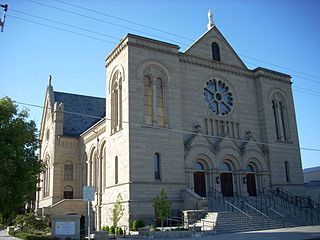
The Cathedral of St. John the Evangelist, also known simply as St. John's Cathedral, is a Catholic cathedral and parish church in the western United States, located in Boise, Idaho. The seat of the Diocese of Boise, the church building was individually listed on the National Register of Historic Places in 1978. It was included as a contributing property of the St. John's Cathedral Block when the rest of the parish buildings on Block 90 were added to the National Register in 1982. That same year, the parish buildings were included as a contributing property in the Fort Street Historic District.

Boise Junior High School, also known as North Junior High School, is an Art Deco, brick school designed by Tourtellotte & Hummel and constructed in Boise, Idaho, USA, in 1937. The school was included as a contributing property in the Fort Street Historic District on November 12, 1982. It was individually listed on the National Register of Historic Places on November 17, 1982.

The Boise City National Bank building in Boise, Idaho, was designed by architect James King as a 3-story, Richardsonian Romanesque commercial structure, inspired by the Marshall Field's Wholesale Store in Chicago. Construction began in April, 1891, and the building was completed in 1892.

The Idaho Building in Boise, Idaho, is a 6-story, Second Renaissance Revival commercial structure designed by Chicago architect, Henry John Schlacks. Constructed for Boise City real estate developer Walter E. Pierce in 1910–11, the building represented local aspirations that Boise City would become another Chicago. The facade features brick pilasters above a ground floor stone base, separated by seven bays with large plate glass windows in each bay. Terracotta separates the floors, with ornamentation at the sixth floor below a denticulated cornice of galvanized iron.

The Hoff Building is an historic building in the western United States, located in Boise, Idaho. Designed by Boise architects Tourtellotte & Hummel, it was constructed 94 years ago in 1930 in the style of Art Deco. Known as Hotel Boise until 1976, the building is a contributing resource in the Boise Capitol Area District, listed on the National Register of Historic Places since May 12, 1976.

Bishop Funsten House, also known as The Bishops' House, Old Bishops' House, and Bishop Rhea Center, is a 2+1⁄2-story Queen Anne style clergy house constructed in 1889 in Boise, Idaho, USA, that served as the rectory for St. Michael's Church and later St. Michael's Cathedral until 1960. The house was renovated and expanded during a 1900 remodel by architect John E. Tourtellotte.

The Lower Main Street Commercial Historic District in Boise, Idaho, is a collection of 11 masonry buildings, originally 14 buildings, that were constructed 1897-1914 as Boise became a metropolitan community. Hannifin's Cigar Store is the oldest business in the district (1922), and it operates in the oldest building in the district (1897). The only building listed as an intrusion in the district is the Safari Motor Inn (1966), formerly the Hotel Grand (1914).
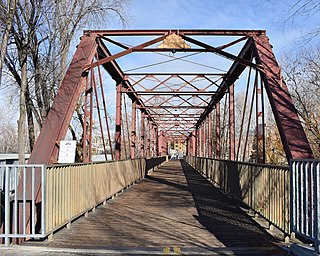
The Ninth Street Bridge in Boise, Idaho, also known as the Eighth Street Bridge, crosses the Boise River and is a 2-span, pin-connected Pratt through truss design constructed by the Missouri Valley Bridge & Iron Co. and completed in 1911. Each span is 160 ft (49 m) and includes six full panels and two end panels, supported by concrete piers at each end and midway in the river. Laced channel sections with cover plates form the upper chords, with eyebars on the lower chords. Eyebars with turnbuckles form the diagonals. The bridge was added to the National Register of Historic Places in 2001.

The Idaho State Forester's Building, also known as The Cabin, in Boise, Idaho, is a 1+1⁄2-story log cabin designed by Boise Payette Lumber Company architect Hans C. Hulbe and constructed in 1940 by round-log artists John Heillila and Gust Lapinoja. Logs for the cabin are peeled Engelmann spruce with full dovetail notch and oakum chinking. Inside paneling on office walls includes yellow pine, white pine, and western red cedar, and all of the wood came from Idaho forests and was donated by lumber companies with business interests in Idaho. The building was added to the National Register of Historic Places in 1997.

The United States Post Office - Nampa Main, also known as the Herbert A. Littleton Postal Station, in Nampa, Idaho, is a two-story Neoclassical building completed in 1931. James A. Wetmore was the supervising architect. The building was added to the National Register of Historic Places in 1989.

The Union Block and Montandon Buildings in Boise, Idaho, are 2-story commercial buildings with rustic sandstone facades. The Romanesque Revival Union Block was designed by John E. Tourtellotte and constructed in 1901, and the Renaissance Revival Montandon Building was designed by J.W. Smith and constructed in 1908. Also known as the Fidelity-Union Block, the buildings were added to the National Register of Historic Places (NRHP) in 1979.
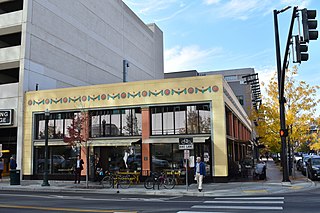
The John Tourtellotte Building in Boise, Idaho, is a 1-story, reinforced concrete commercial space designed by Tourtellotte and Hummel and constructed in 1928. Plans for the building were drawn at the firm's Portland office with some participation from local Tourtellotte & Hummel architects. The building was added to the National Register of Historic Places in 1982, and its nomination form describes the structure as representing "the classicizing impulse of the 1920s in interaction with new structural systems and the functional aesthetic which accompanied them." The Tourtellotte Building is veneered with cast panels placed to resemble stone blocks, and the upper facade includes a "continuous frieze of swags and discs."

The Wellman Apartments in Boise, Idaho, United States, is a 2-story, Georgian Revival building designed by Tourtellotte & Hummel and constructed by local contractor J.O. Jordan in 1929. The building included 16 "efficiency" apartments that featured a Murphy bed, kitchenette, dressing room, and bathroom. Soon after the building opened, it was remodeled, although the exterior remains nearly unaltered. The building was added to the National Register of Historic Places in 1982.
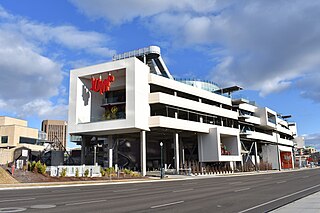
Jack's Urban Meeting Place (JUMP) is a creative activity center in Boise, Idaho, with facilities for public meetings, workshops, and exhibition space. An amphitheater and multi-purpose studios for art, movement, and cooking are included. A collection of 52 tractors are on display at various locations in the facility.
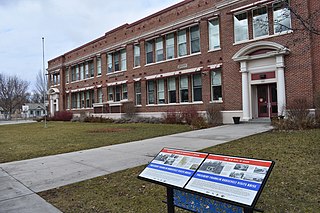
Roosevelt School in Boise, Idaho, is a 2-story, brick and concrete elementary school designed by Wayland & Fennell and constructed by O.W. Allen in 1919. The building features Classical Revival design elements and a flat roof with a parapet above a horizontal course of decorative concrete.

The U.S. Post Office-Caldwell Main in Caldwell, Idaho, is a 1-story, Classical Revival building constructed of brick with a sandstone foundation and terracotta decorations. Established in 1932, the Post Office features a marble entry flanked by terracotta pilasters below a leaded glass fan window. The design is credited to James A. Wetmore, acting supervising architect for the U.S. Treasury. The building was added to the National Register of Historic Places in 1989.
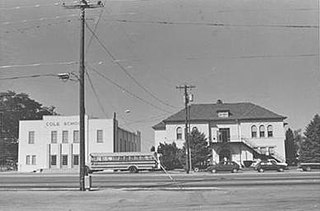
Cole School and Gymnasium in Boise, Idaho, was a 2-story, stucco over brick school building with stone trim. The year of construction was likely 1903, although in an annual report issued by the Boise School District 1972–73, the year was given as 1908. Above the main entry of a 1951 addition to the building was written, "Cole Elementary Est. 1888." The buildings were added to the National Register of Historic Places (NRHP) in 1982.

Franklin School was a two-story brick and stucco building in the western United States, located in Boise, Idaho. Designed by Tourtellotte & Hummel and constructed in 1926, the school featured a flat roof with a decorated concrete parapet. Added to the National Register of Historic Places (NRHP) in 1982, it was demolished in 2009.

Aiken's Hotel in Eagle, Idaho, also known as Eagle Hotel, is a two-story concrete block building constructed in 1910. The hotel features design elements of Colonial Revival architecture, but it has been considered an Italianate structure. The hotel was designed with 16 rooms large enough to accommodate residential customers. It was added to the United States National Register of Historic Places in 1982.

The Owyhee County Courthouse in Murphy, Idaho, is a 1-story Art Deco building designed by Tourtellotte & Hummel and constructed in 1936. The brick building features a prominent entry with fluted pilasters on either side of a square arch, with foliated sunburst panels that frame an entablature of floral, triangular, and wavelet designs. A panel above the entry reads, "Owyhee County Courthouse." The building was added to the National Register of Historic Places in 1982.






















